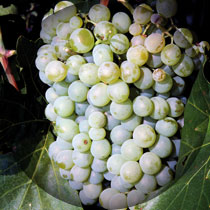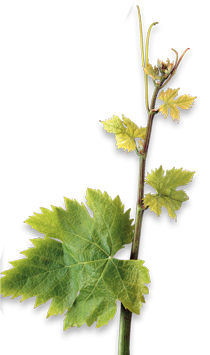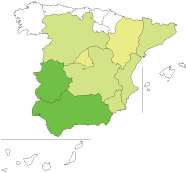Pedro Ximénez (ES)
Variety: white | Category III | Spain


General Information
Pedro Ximénez


Origin: Rumour has it that a native of The Netherlands with a similar name brought the variety to Spain, which is highly improbable, because of the high heliothermic requirements of this variety, which points to a southern origin.
Chief areas of distribution: Andalusia, where the highest concentration of this variety occurs in the regions of Jerez (Cádiz) and Montilla Moriles (Córdoba).
Official synonym(s) (national and OIV): Pedro Jiménez.
Historic and regional synonyms: Pedro Ximén, PX, Pedro, Pedro Ximen, Ximen and Alamis, Pero Ximen, Chironés.
Homonym(s): Pedro Ximinez faux (TN).
Area under cultivation: 8,900 ha (Ministry of Agriculture, 2007).
Trend: Downward.
Varietal variability: Medium.
Availability of propagating material: Various clones from Catalonia and Andalusia ensure availability of certified material to meet requirements.
Molecular Profile (OIV)
Regional Classification
Morphology
Phenology
Vegetative Potential
Viticultural Parameters
Oenology
Variety Characteristics
| VVMD5 | VVMD7 | VVMD27 | VrZag62 | VrZag79 | VVS2 | ||||||
| Allele1 | Allele2 | Allele1 | Allele2 | Allele1 | Allele2 | Allele1 | Allele2 | Allele1 | Allele2 | Allele1 | Allele2 |
| 232 | 236 | 237 | 237 | 177 | 181 | 187 | 187 | 241 | 2 | 130 | 142 |
Recommended in Portugal: Andalusia, Castilla la Mancha, Extremadura, Murcia, Valencia.
Authorized: Canary Islands, Cantabria.
DOC quality wine: DO Cataluña, Condado de Huelva, Jerez-Xérès-Sherry y Manzanilla-Sanlúcar de Barrameda, Jumilla, La Mancha, Málaga, Montilla-Moriles, Ribera del Guadiana, Sierra de Málaga, Terra Alta y Valencia. DOCa Priorato.
Young shoot (form of tip): Very open, anthocyanin colouration absent, no, or sparse, prostrate hairs.
Young leaf: Low or absent anthocyanin colouration, almost no hairs between veins, very sparse on main veins.
Young shoot: Nodes and internodes green with red stripes on upper and lower surfaces, glabrous.
Inflorescence (sex of flower): Hermaphrodite.
Mature leaf: Medium size, deep green, slightly shiny, pentagonal, five slightly overlapping lobes with medium notching. Half-open V-shaped petiolar sinus, no fluffy hair on veins or between veins. Petiole shorter than main vein, with very sparse hairs. Medium sized teeth convex on both sides, high length-width ratio of blade.
Bunch: Large, medium density, short petiole.
Berry: Medium size, uniform, yellow green, with very thick skin. Berry difficult to detach. Flesh colourless, soft, and very juicy.
Woody shoot: Well-formed, dark brown, striate.
Time of bud burst: Normal.
Flowering: Normal.
Berry (colour change): Normal.
Berry (harvest ripe): Normal to late.
Vigour of shoot growth: High at the time of bud burst.
Pruning weight:: Very high.
Shoot attitude (habit): Heliotropic, erect growth.
Length of internodes: Long.
Shoot length: Long.
Tendency to form lateral shoots: Medium to low.
Rate of multiple bud bursts: Zero.
Bud fertility index: Very high.
Yield consistency: Consistent.
Crop uniformity: Uniform.
Sensitivity to abiotic factors: Tolerates low humidity.
Susceptibility to fungal diseases: Very susceptible to Peronospora and Bunch Rot (Botrytis). Susceptible to Oidium, Esca and Eutypia.
Susceptibility to Pests: Termites.
Bunch weight: High.
Seeds per berry: 3-4.
Vineyard conduction system: Nowadays, usually the vase training system.
Pruning: Short pruning, cane pruning.
Green pruning: Not absolutely necessary.
Soil requirement: Deep sandy, dry, calcareous soils.
Climatic requirements: Warm and dry.
Vine density: 1,200 – 2,400 vines/ha.
Rootstock: No known incompatibility.
Incidence of coulure/millerandage: Low. Occurs in some years.
Spoilage of mature berries: Susceptible when yields are high.
Risk of bird damage: Yes.
Machine harvest suitability: Hardly suitable.
Hand harvest suitability: Suitable.
Wine type: Quality dessert wines (Sherry and Málaga), table wines of medium quality.
Potential alcohol content: In the appropriate terroir, very high sugar concentrations (14.5% – 16% vol.) which can be so high that it can be used to boost alcohol content in dessert wine.
Natural acidity of must: Medium.
Total anthocyanins: Very low.
Risk of oxidation of must: Present.
Tendency towards acidity loss in fermentation: Low.
Colour intensity of wine: High.
Wine colour tonality: Straw yellow.
Tannins: Low.
Total polyphenol index (at 280 nm): 9.
Risk of oxidation of wine: Low.
Aromatic profile: Hints of fruit preserves.
Ageing Potential: Very good, as a dessert wine.
Blending recommendation: With Palomino.
Wine Descriptors: The wine presents iself with a strong, almost dark colour, with deep aromas as one encounters with raisins. In the mouth it is sweet and soft, has a well-balanced abundant richness, and long finish.
Wine quality: Premium quality dessert wines.

